Continued from Thailand – Laos Travel: Day 11 – Part 2 – First Time Cycling In Thailand & Visiting Wat Ratchaburana. For pre-travel, please refer here.
From Wat Ratchaburana, we cycled to Wat Yannasen.
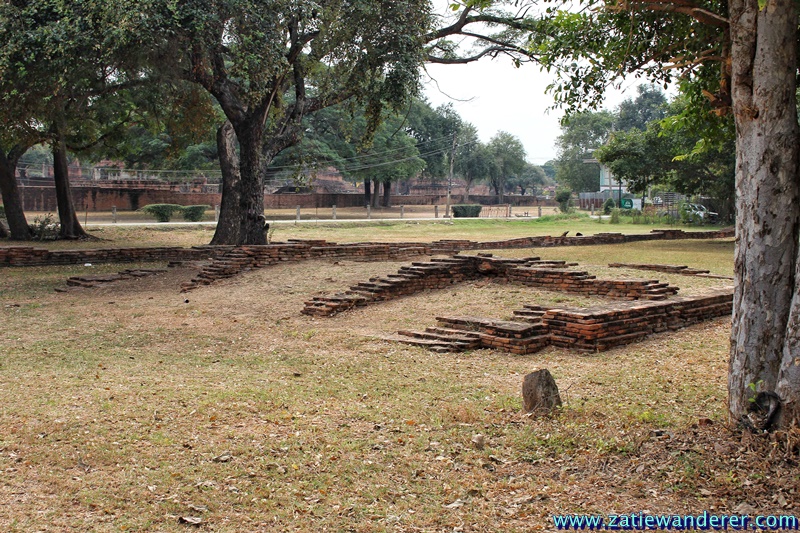
Our cycling distance is 900 meters. In Google Maps, it is also known as Wat Yan Sen.
The whole time we cycled in Ayutthaya, the road conditions here were less pleasant. Not because of speeding vehicles, but because of the relatively narrow shoulder width of the road and sometimes making us stray to the side of the road shoulder or stop cycling simply to distance ourselves from large vehicles such as buses.
So, I told Tatie who was carrying Aqif to cycle in front and I was behind them as a barrier in case of any untoward incident. Sacrifice anything ………
This is Wat Yannasen. For the knowledge of the reader, we are only hunting for Wat which belongs to the top 10 on the Tripadvisor website. It’s a bit tiring to explore other Wats that are less attractive and only suitable for history hunters. However, Wat Yannasen is not in the top 10 categories. Just because it is close to Wat Ratchaburana, so we went there. We went wherever we could from nothing at all.
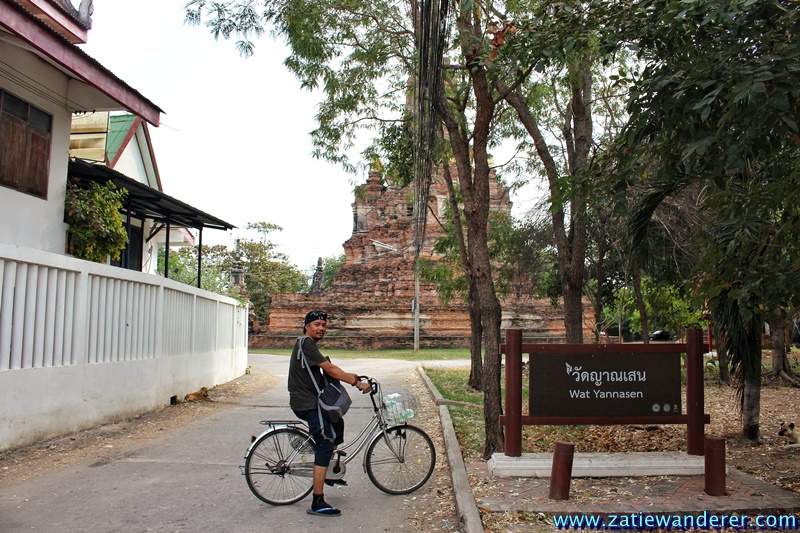
Yes, my basket at the front is typical for mineral water for the whole family.
Tatie’s basket is special for snacks for the whole family. Actually, an old wat like this can still be used. Whether or not to dare to climb up is good for adventurers or Buddhists who want to meditate in the hole. This type of construction using thousands of bricks makes me not dare to step up the stairs.
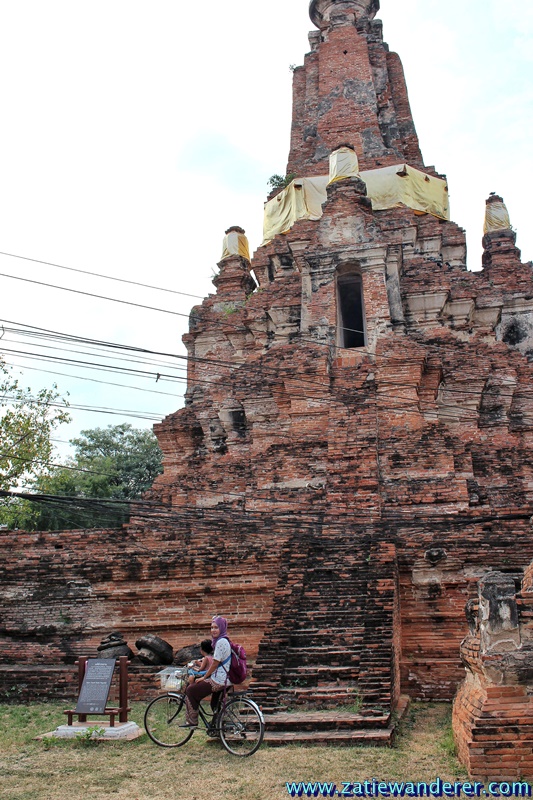
The door hole is known as Reun That (relic chamber). It was built around 1600 to 1700s.
Next to it is a rather small chedi.
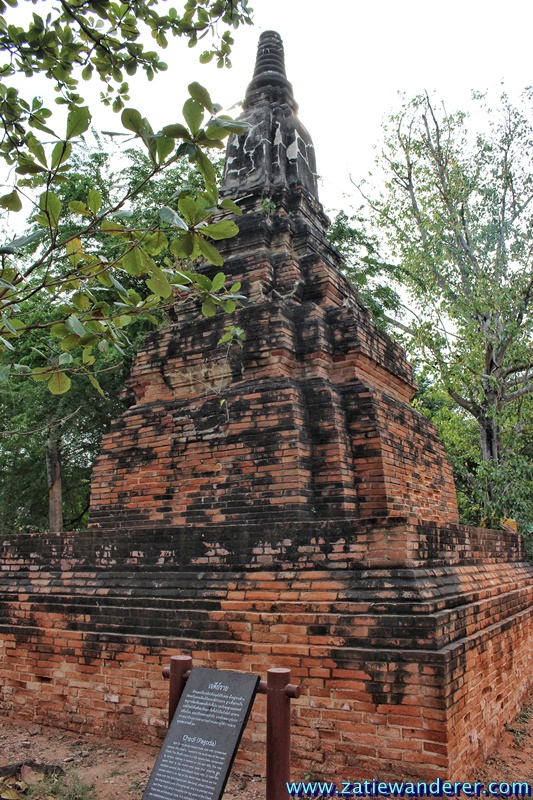
Chedi is also known as Pagoda. My previous mistake was to assume the chedi was the local call for the stupa. There is also chedi that is combined with stupas for example like this chedi. From the use of building materials, it is estimated that this chedi was built in the 1800s.
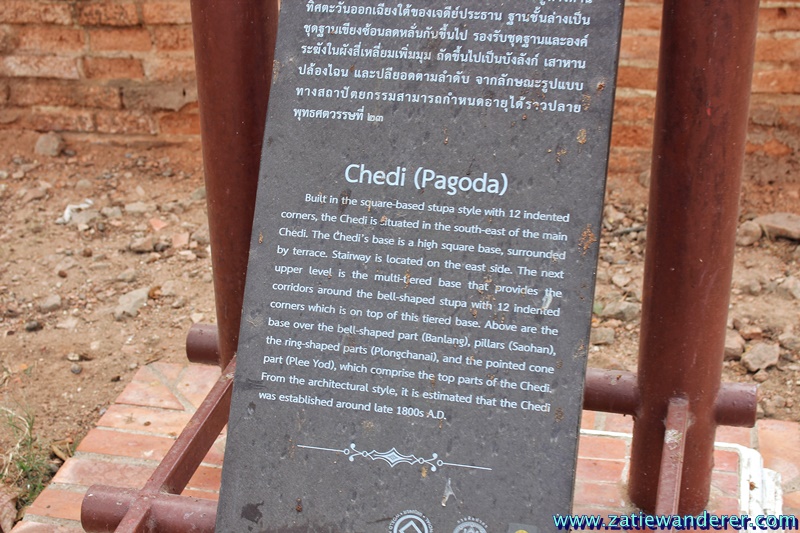
Take a look at how the old buildings are so artistic and use strong materials.

This is a chedi site. Only the site remains and the top is gone.
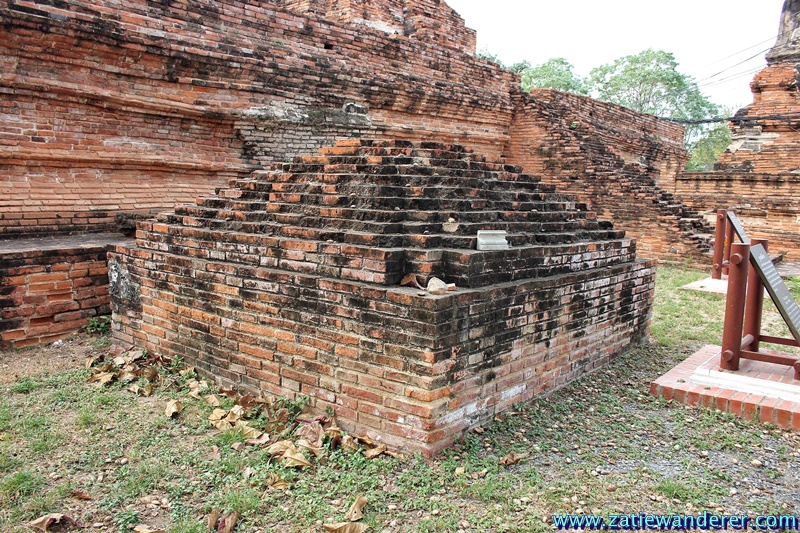
Pictured for the last memories. Probably will not come here again as there is no further purpose other than Buddhists who want to do a historical tour.
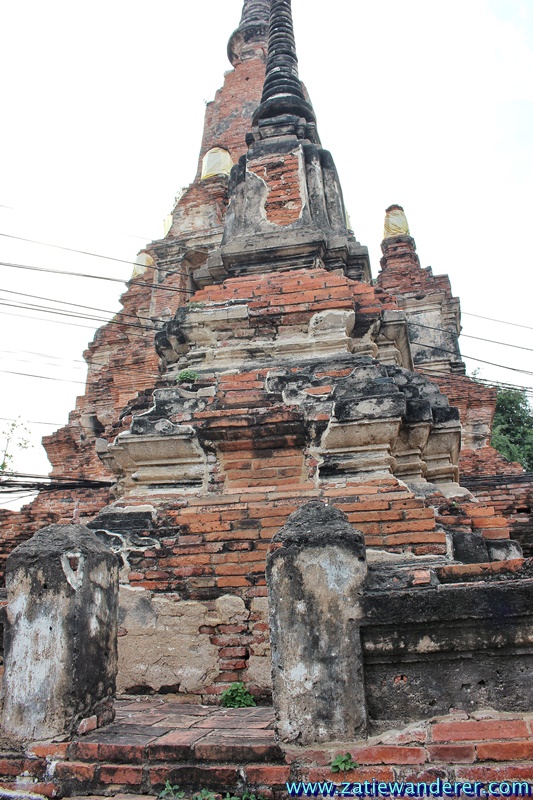
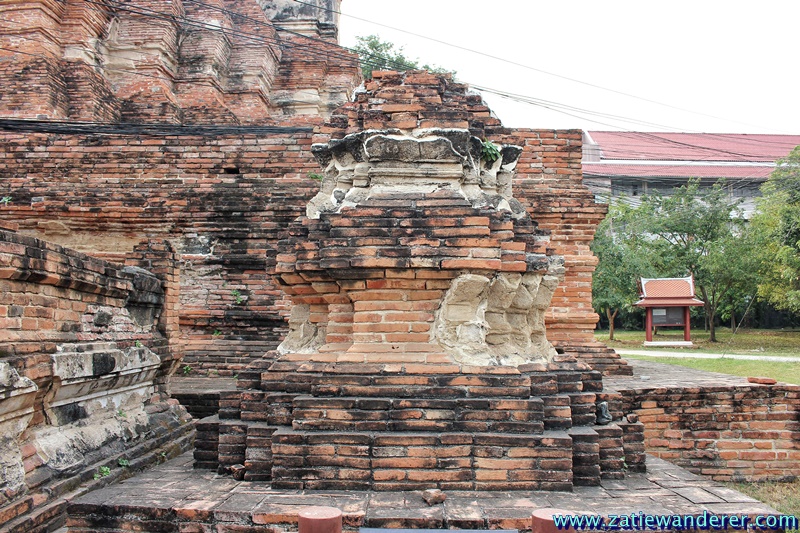
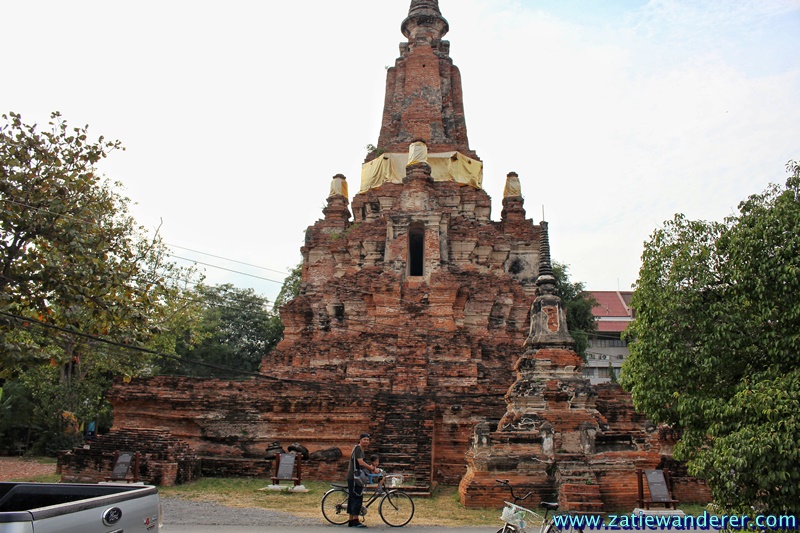
Although Wat Yannasen is no longer used for religious ceremonies, a modern Wat was built next to it to ride on the popularity of Wat Yannasen.
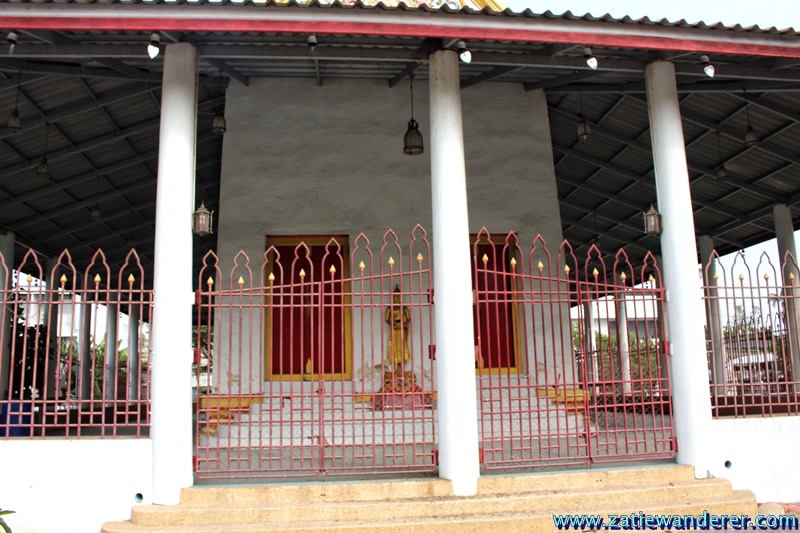
Overall, Wat Yannasen is not worth a visit as there is nothing interesting here for the tourist unless you are suddenly passing by in the vicinity. But the good thing is, there is no influx of tourists and it calms the mind.

Let’s paddle to Wat Thammikarat which is famous for its many chickens. From a distance, two western tourists were seen walking here. What, on foot? Is it really hard to ride a bike?
Wat Thammikarat is just 280 meters away.
Of all the Wats in Ayutthaya, I am very interested in Wat Thammikarat and another one which is Wat Maha That (I will share later). This is because there are a lot of creative works of art and consist of statues/sculptures that are also carved from wood. Is it worth it? Yes, very, very much!
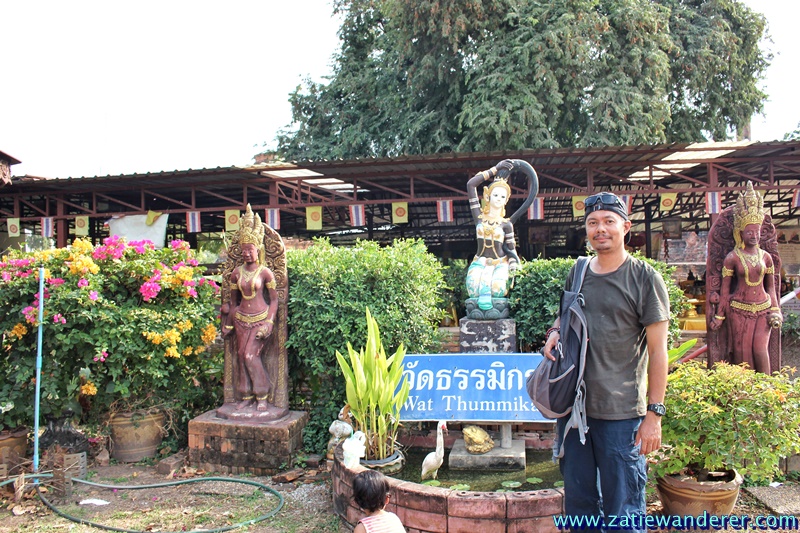
Here is also the only Wat that has to pay an entrance ticket of THB50 (RM6.00) per adult.
Wat Thammikarat (also known as Wat Dhamikaraj) is a large temple located just east of the Royal Palace of Ayutthaya. Its proximity and size testify to its importance in the Ayutthayan period, but it is not known exactly when the temple was founded. Local legends suggest that it may have preceded the establishment of Ayutthaya itself in the 14th century; if so, the present-day buildings are almost certainly a rearrangement of the early Ayutthayan period. Some ancient evidence includes a large bronze head of a Buddha found here. Another antique feature is the figure of a lion (singh) surrounding the main chedi similar to the Khmer motif seen in Angkor, a city that reached its peak several hundred years before the founding of Ayutthaya.
It was here that the rebellious Prince Si Sin was placed under house arrest during the reign of King Cakkraphat (mid-16th century). When his age-qualified to be a monk, the King of Ayutthaya called him, but it was found that he had fled three days earlier. The king ordered the official Cho Phraya Maha Sena to find him. Although discovered later, the rebellious prince was able to gather a number of followers and storm the king’s palace, forcing the king to flee with his barge. However, the rebellion did not last long and Si Sin was killed at gunpoint. His followers were sentenced to death, and “the king ordered the death penalty in large numbers”.
Here we continued into the main building to see the reclining Buddha.
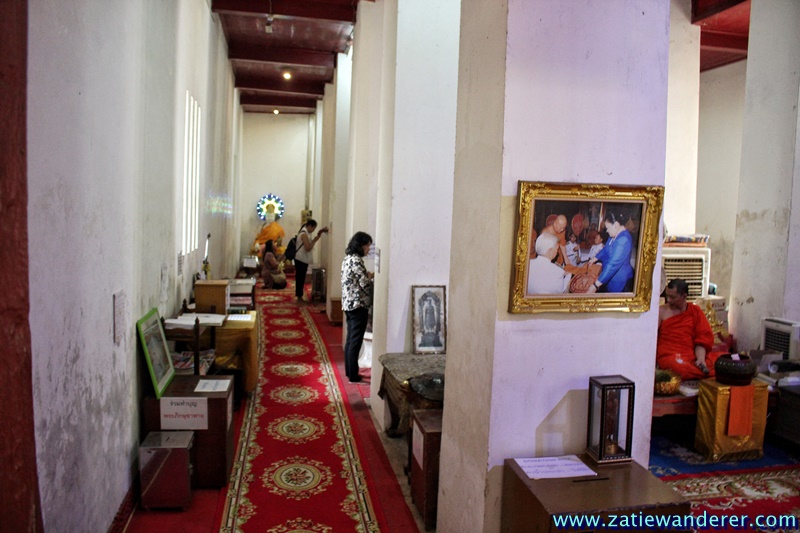
I walked to the end, because ……….
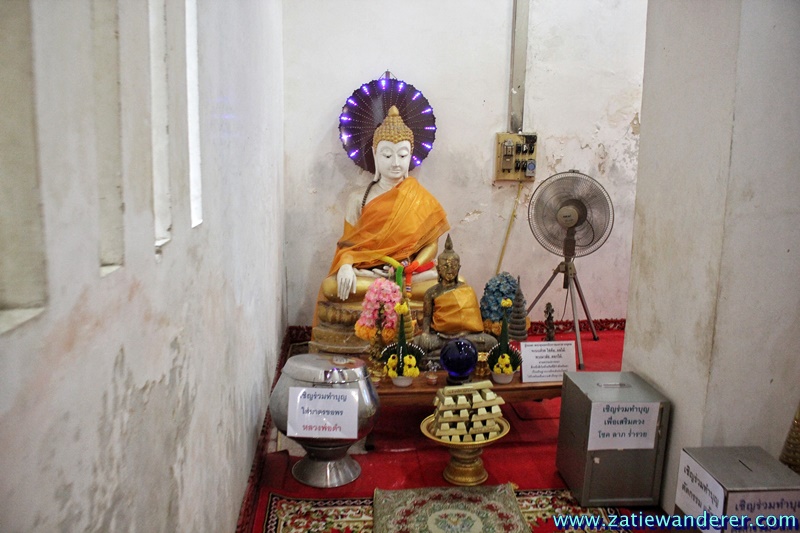
Because I want to take a picture with his face, hehe.
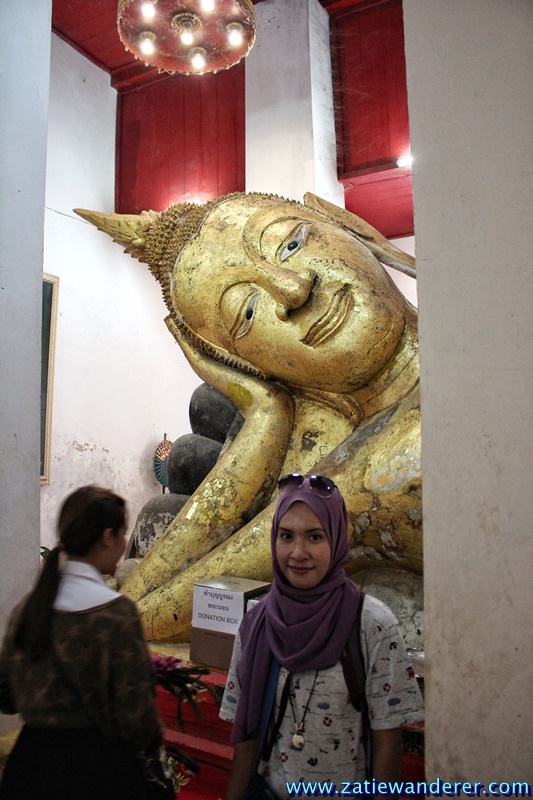
This is the body position.
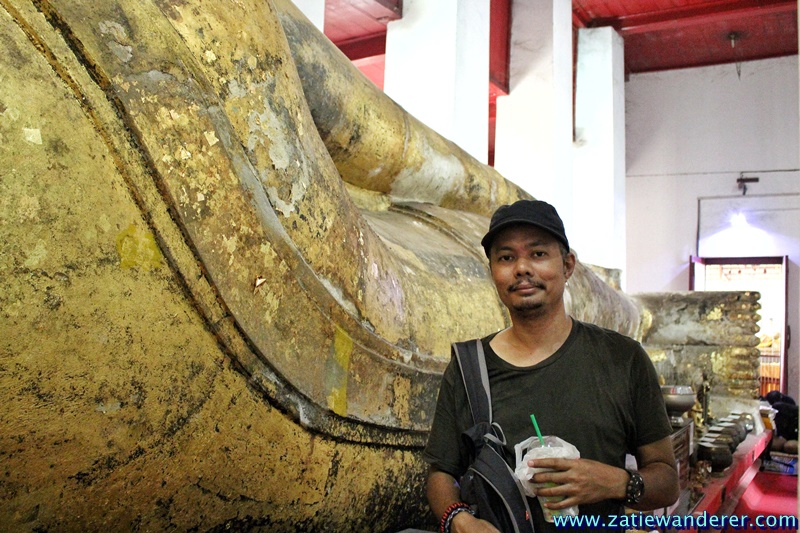
And finally at his feet. Looks like a monk waiting here for anyone who wants to apply for any request such as good luck wishes, self -purification from bad energy and so on.
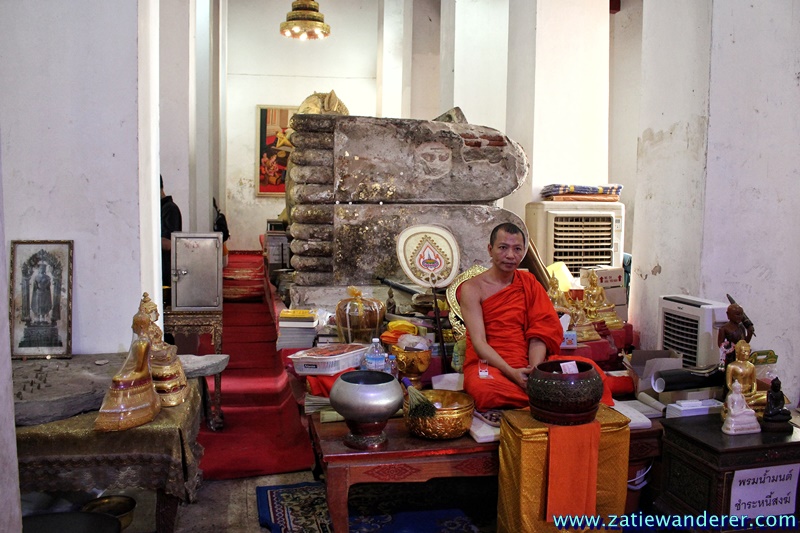
Here you can give alms. But because he knew that we were Muslims, so he did not call or wave at us (others he would call or make a hand gesture from afar).
Chedi combined with a stupa. In my opinion, this is the oldest build here.
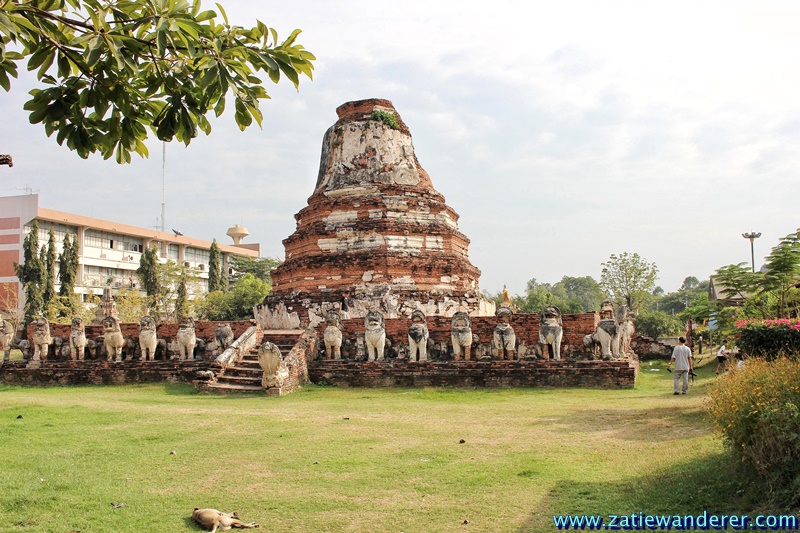
Then we stepped out to the other side and had to go through the sidewalk. What I’m interested in here is, what’s the purpose of the dressing table and the mirror there?
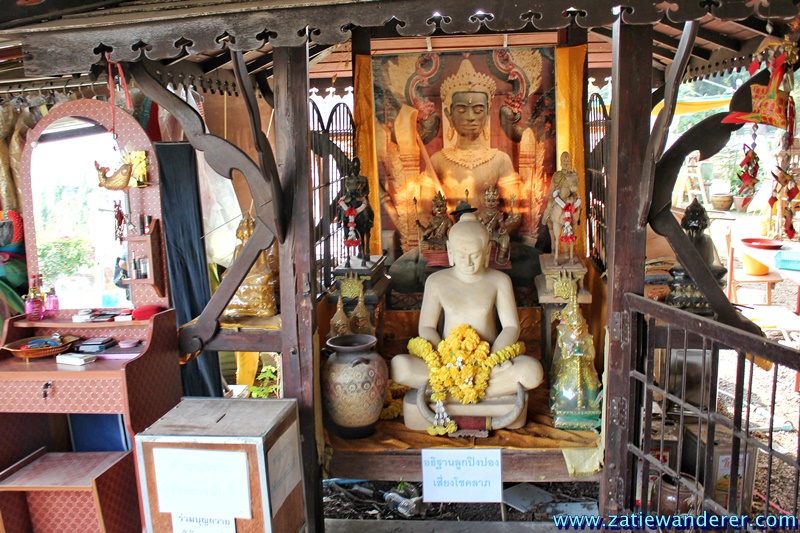
Well, this is my favorite carving. For the researcher of spiritualism, perhaps you already know what allusions are trying to be conveyed in this expedition of ships. Only one answer I can say, this world is like a ship with all kinds of an entourage. Some are good, some are bad. They all have opposite natures but both lead to one destination or understanding of the meaning of life. All delegations are headed by a group leader with various titles given according to local customs and races.
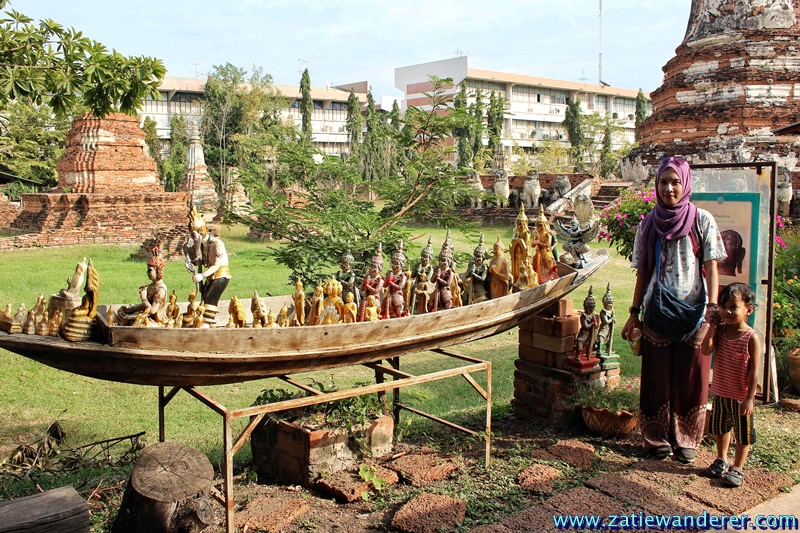
This is the corridor I meant.

This Southeast Asia includes a wide variety of mystical animals. The white statues are called gryphon (griffon) and there is no Malay translation and are referred to as grifin.
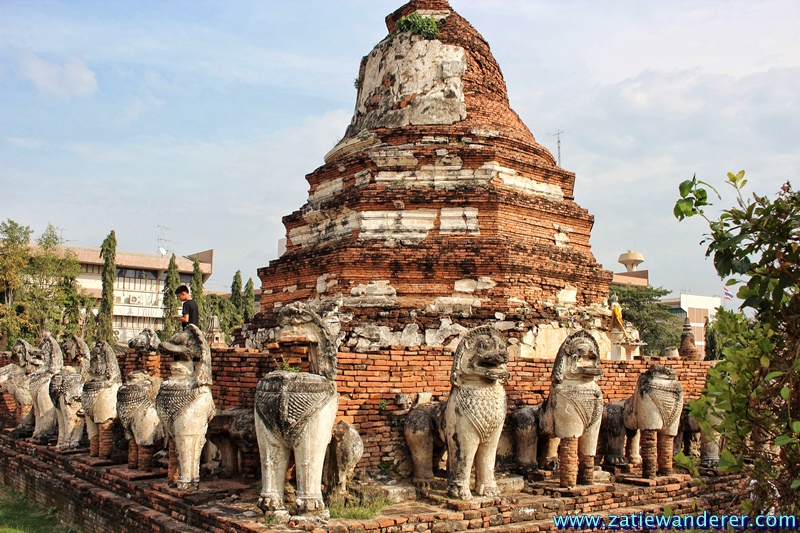
What else are mystical animals in Southeast Asia? Giant eagle (name taken for the island of Langkawi in Malaysia), fish-legged lion (Singapore), garuda (Indonesia) and many more.
This wat got the nickname ‘chicken Wat’ for most tourists. Did you know why? These are just two chickens.
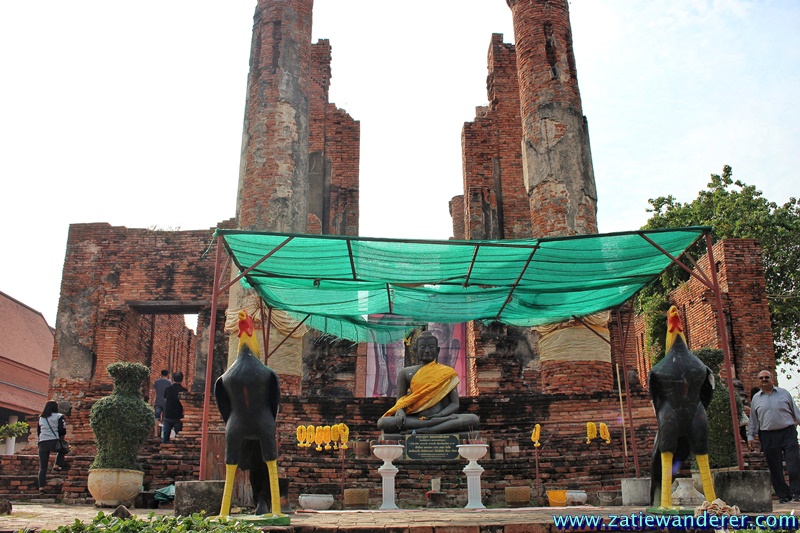
To head to a monument which is also quite old, we have to go through a prayer site. As if it had just been erected here probably on request because of looking at the place of worship which was merely a canvas cloth only.
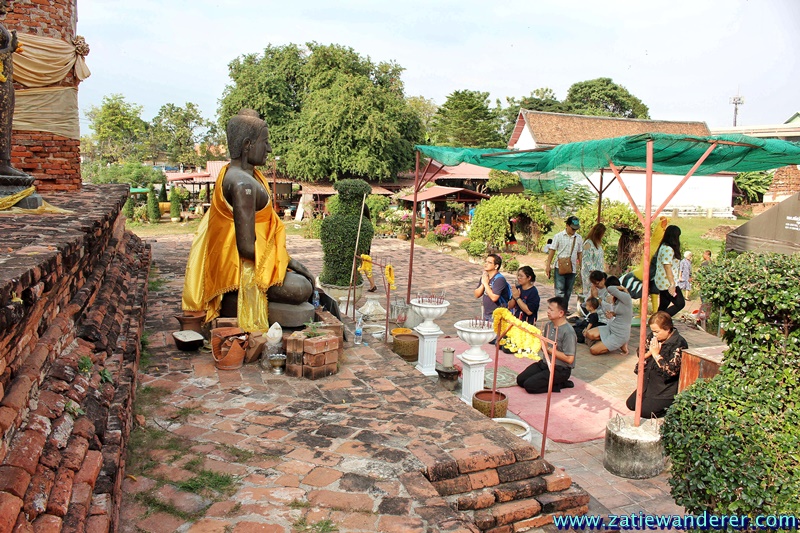
I like monuments like this. Very unique to me. Some pillars have already collapsed. The question arises, was this once a large prayer hall and was there a roof on it?
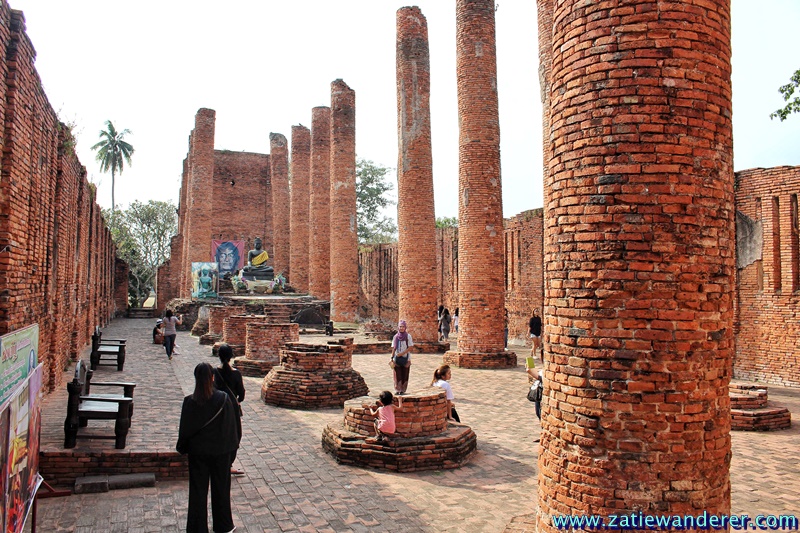
Aqif climbed on top of one of the chedi sites that are here.
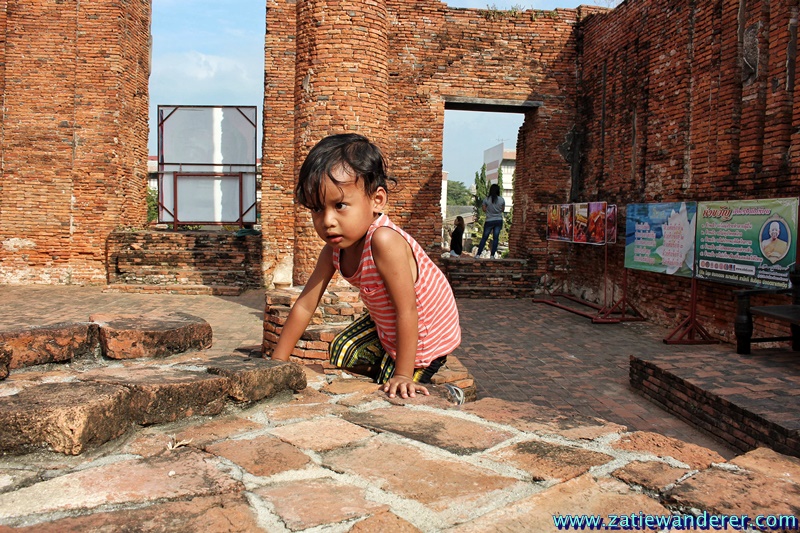
The pillars look interesting to me.
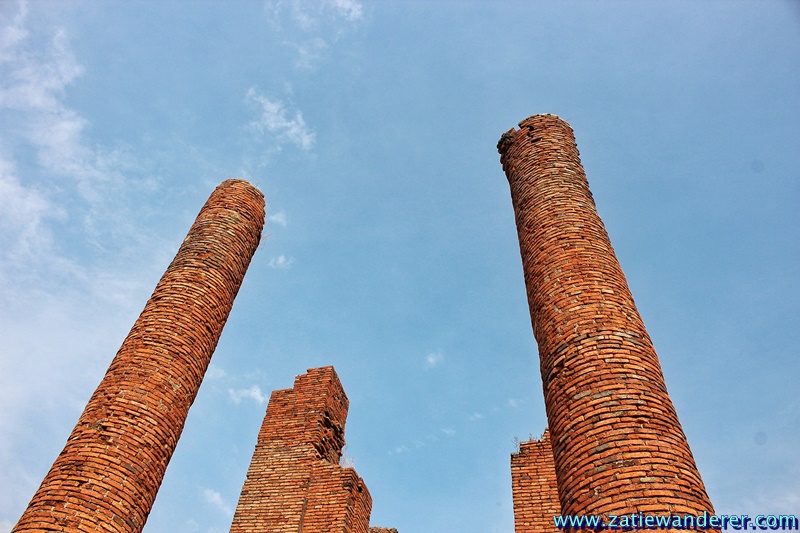
Ok, here are thousands of chickens. Not just two chickens like just now.
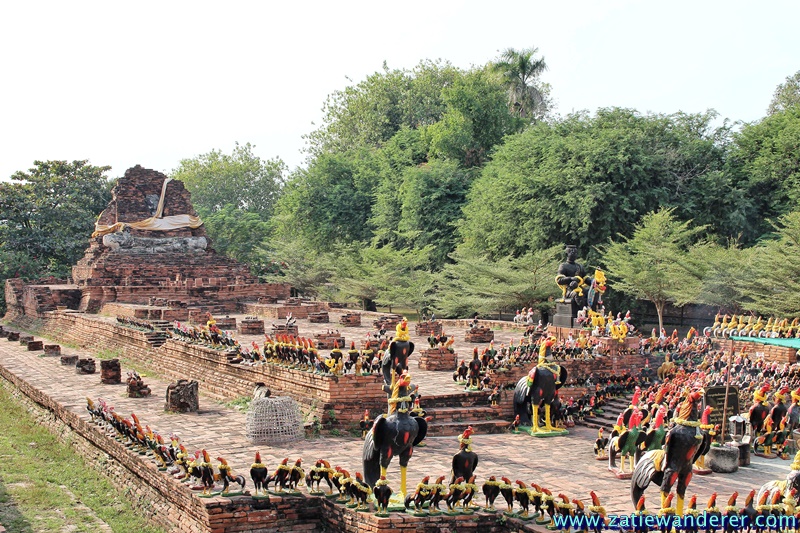
Somehow the chicken became a symbol here as opposed to the statues of Buddha and monks. The chicken statue is large, reaching the size of an adult’s height. According to the information here, the chicken represents a symbol of good fortune and wealth.

Probably thousands of roosters here because they were brought and placed by Buddhists to gain wealth in what they ventured into.
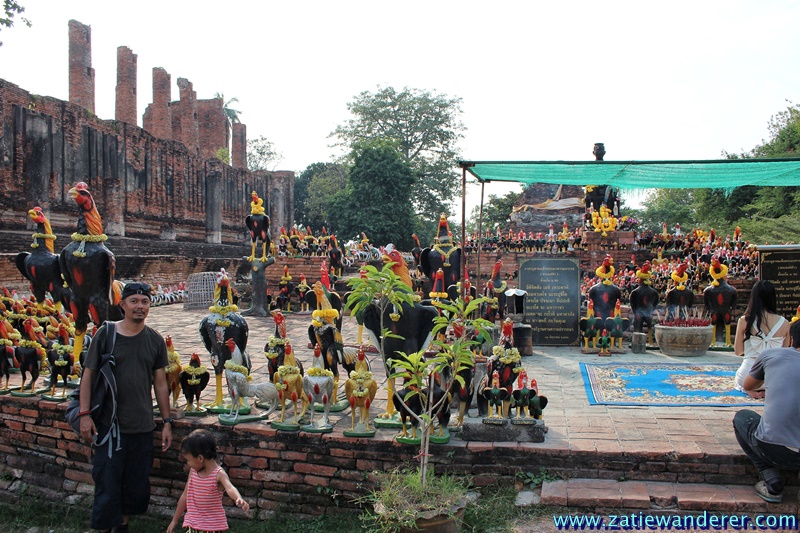
A statue’s head is placed in the petals of a lotus flower. I actually felt like throwing up (not real vomiting) in Ayutthaya because I started to get bored of visiting historical places that are almost similar in shape. What can be done, the city of Ayutthaya is indeed known as a historic city and that is its main attraction.
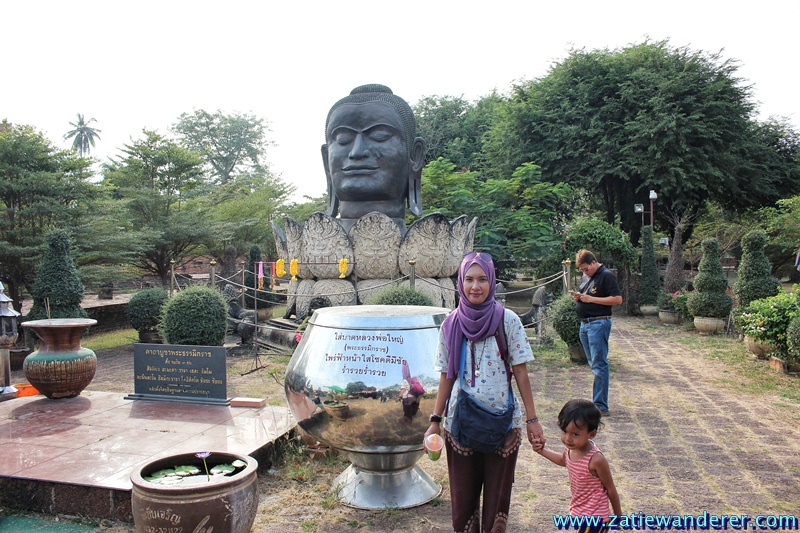
Let’s go to Ayutthaya Historical Park.

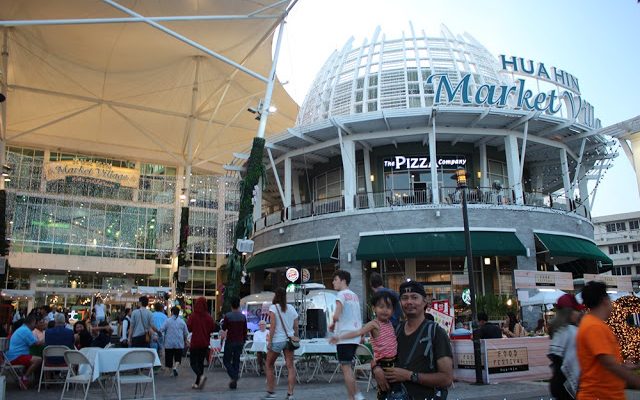
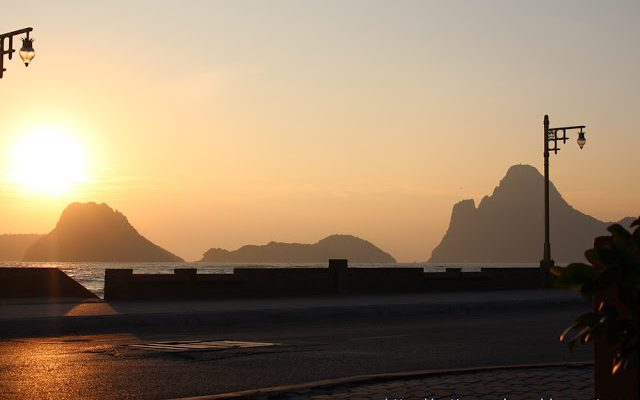
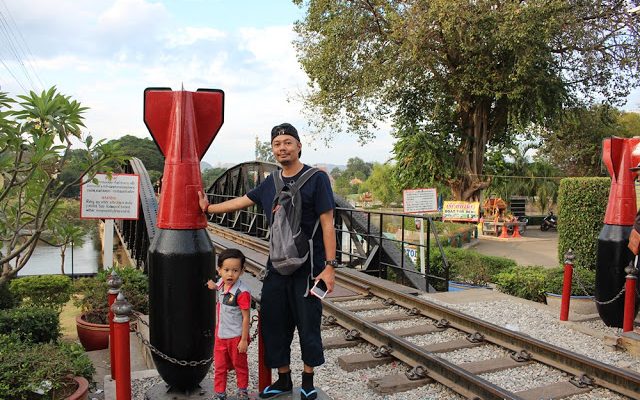
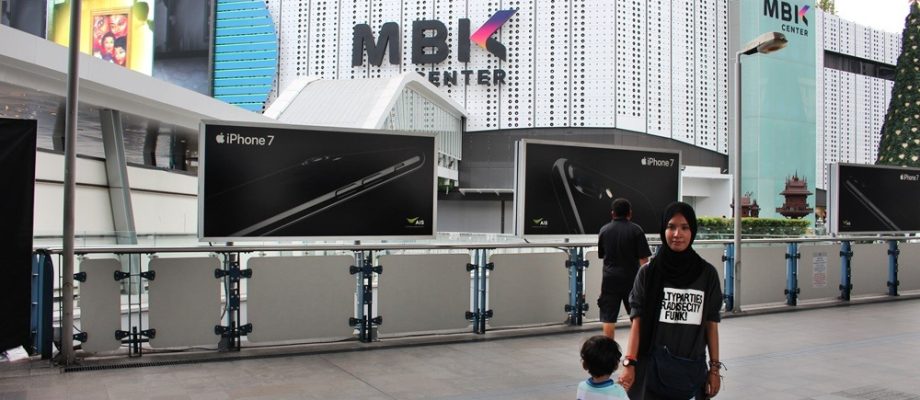
Leave a Reply